第9章 The First Book(9)
The messengers who were despatched to make trial of the oracles were given the following instructions: they were to keep count of the days from the time of their leaving Sardis, and, reckoning from that date, on the hundredth day they were to consult the oracles, and to inquire of them what Croesus the son of Alyattes, king of Lydia, was doing at that moment. The answers given them were to be taken down in writing, and brought back to him. None of the replies remain on record except that of the oracle at Delphi. There, the moment that the Lydians entered the sanctuary, and before they put their questions, the Pythoness thus answered them in hexameter verse:-I can count the sands, and I can measure the ocean;I have ears for the silent, and know what the dumb man meaneth;Lo! on my sense there striketh the smell of a shell-covered tortoise, Boiling now on a fire, with the flesh of a lamb, in a cauldron-Brass is the vessel below, and brass the cover above it.
These words the Lydians wrote down at the mouth of the Pythoness as she prophesied, and then set off on their return to Sardis. When all the messengers had come back with the answers which they had received, Croesus undid the rolls, and read what was written in each. Only one approved itself to him, that of the Delphic oracle.
This he had no sooner heard than he instantly made an act of adoration, and accepted it as true, declaring that the Delphic was the only really oracular shrine, the only one that had discovered in what way he was in fact employed. For on the departure of his messengers he had set himself to think what was most impossible for any one to conceive of his doing, and then, waiting till the day agreed on came, he acted as he had determined. He took a tortoise and a lamb, and cutting them in pieces with his own hands, boiled them both together in a brazen cauldron, covered over with a lid which was also of brass.
Such then was the answer returned to Croesus from Delphi. What the answer was which the Lydians who went to the shrine of Amphiarans and performed the customary rites obtained of the oracle there, I have it not in my power to mention, for there is no record of it. All that is known is that Croesus believed himself to have found there also an oracle which spoke the truth.
After this Croesus, having resolved to propitiate the Delphic god with a magnificent sacrifice, offered up three thousand of every kind of sacrificial beast, and besides made a huge pile, and placed upon it couches coated with silver and with gold, and golden goblets, and robes and vests of purple; all which he burnt in the hope of thereby making himself more secure of the favour of the god.
Further he issued his orders to all the people of the land to offer a sacrifice according to their means. When the sacrifice was ended, the king melted down a vast quantity of gold, and ran it into ingots, making them six palms long, three palms broad, and one palm in thickness. The number of ingots was a hundred and seventeen, four being of refined gold, in weight two talents and a half; the others of pale gold, and in weight two talents. He also caused a statue of a lion to be made in refined gold, the weight of which was ten talents. At the time when the temple of Delphi was burnt to the ground, this lion fell from the ingots on which it was placed; it now stands in the Corinthian treasury, and weighs only six talents and a half, having lost three talents and a half by the fire.
On the completion of these works Croesus sent them away to Delphi, and with them two bowls of an enormous size, one of gold, the other of silver, which used to stand, the latter upon the right, the former upon the left, as one entered the temple. They too were moved at the time of the fire; and now the golden one is in the Clazomenian treasury, and weighs eight talents and forty-two minae; the silver one stands in the corner of the ante-chapel, and holds six hundred amphorae. This is known because the Delphians fill it at the time of the Theophania. It is said by the Delphians to be a work of Theodore the Samian, and I think that they say true, for assuredly it is the work of no common artist. Croesus sent also four silver casks, which are in the Corinthian treasury, and two lustral vases, a golden and a silver one. On the former is inscribed the name of the Lacedaemonians, and they claim it as a gift of theirs, but wrongly, since it was really given by Croesus. The inscription upon it was cut by a Delphian, who wished to pleasure the Lacedaemonians. His name is known to me, but I forbear to mention it. The boy, through whose hand the water runs, is (I confess) a Lacedaemonian gift, but they did not give either of the lustral vases. Besides these various offerings, Croesus sent to Delphi many others of less account, among the rest a number of round silver basins. Also he dedicated a female figure in gold, three cubits high, which is said by the Delphians to be the statue of his baking-woman; and further, he presented the necklace and the girdles of his wife.
These were the offerings sent by Croesus to Delphi. To the shrine of Amphiaraus, with whose valour and misfortune he was acquainted, he sent a shield entirely of gold, and a spear, also of solid gold, both head and shaft. They were still existing in my day at Thebes, laid up in the temple of Ismenian Apollo.